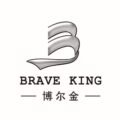
The Tabletop Laser Cutter is favored by many beginners because of its easy operation and quick start. Users only need to upload the designed graphic file to the software, and the laser cutting machine can accurately cut the material into the required shape according to the set parameters. For novices, it is an ideal starting tool.
Understanding the Key Components
The main components of the Tabletop Laser Cutter machine include laser tube, laser head, workbench and control system. The laser tube is responsible for generating the laser beam, the laser head focuses the laser through a high-precision lens, the workbench is used to place and fix the cutting material, and the control system manages the entire cutting process to ensure cutting accuracy and efficiency.
Setting Up Your Tabletop Laser Cutter: A Beginner’s Guide
- Install the laser cutting machine: Place the machine on a stable desktop and ensure good ventilation.
- Connect the power supply and computer: Connect the power cord and data cable according to the manual to ensure that the device is powered on.
- Software Installation and Setup: Download and install the control software compatible with the device to complete the pairing of the device and software.
- Debug the laser head: Adjust the focal length of the laser head according to the material used to ensure the cutting effect.
- Upload the design file and set the parameters: Upload the design drawing to the software, set the appropriate cutting parameters, and start cutting.

Choosing Materials and Tools
- Beginners can start with simple and easy-to-use materials such as wood, acrylic, and cardboard. These materials are stable on Tabletop Laser Cutter machines and have good cutting effects. Wood is usually used for engraving and detailed cutting, acrylic is very suitable for making decorative items with high transparency, and cardboard can be used as a practice material for cutting accuracy. As your skills improve, you can try more challenging materials such as leather, cloth, and metal.
- For the selection of these materials, beginners can start with thin materials because they consume less laser power when cutting and will not put too much pressure on the machine.
First Projects to Try and Resources to Help You Succeed
- Challenging projects include multi-level engraving designs and composite material cutting. These projects help deepen your understanding of the functions of the cutting machine and gradually master complex design and production skills. For example, making three-dimensional engraving or multi-level engraving design projects can help users master cutting skills of different engraving depths and complex details, and improve overall operating capabilities.
- For more challenging projects, engraving and cutting metal are also good choices. Although they require stronger laser machines and higher technical requirements, these advanced skills can be gradually mastered through continuous practice.
Now that you have mastered the basic operation and skills of the Tabletop Laser Cutter machine, you need to accumulate experience through practice. Don’t rush to complete a perfect project. The initial learning should focus on the proficiency of operation and the accuracy of design. Remember, every failed project can bring you valuable experience and make you more handy in future creations. Continue to try different projects and improve your skills. You will gain more fun and sense of accomplishment in the process of creativity and production.


